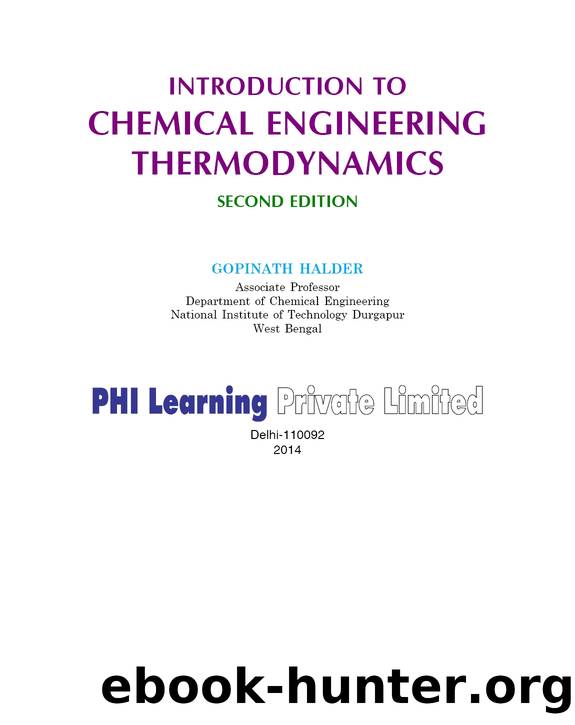Introduction to CHEMICAL ENGINEERING THERMODYNAMICS by HALDER GOPINATH

Author:HALDER, GOPINATH [HALDER, GOPINATH]
Language: eng
Format: epub
Publisher: PHI Learning
Published: 2014-09-01T16:00:00+00:00
JT = +ve implies a cooling effect, i.e., drop in temperature, as P = –ve; T = –ve and
JT = –ve, implies a heating effect, i.e., rise in temperature, as P = +ve; and T = +ve and
JT = 0, implies no temperature change, i.e., neither heating nor cooling effect. The temperature at which no temperature change occurs is known as the inversion temperature .
Joule–Thomson expansion is employed for the liquefaction of gases as well as for the production of low temperature.
Thus, the characteristics of the Joule–Thomson coefficient can be summarized as follows:
Download
This site does not store any files on its server. We only index and link to content provided by other sites. Please contact the content providers to delete copyright contents if any and email us, we'll remove relevant links or contents immediately.
| Automotive | Engineering |
| Transportation |
Mindless Eating by Brian Wansink(543)
Llewellyn's Complete Book of Essential Oils by Sandra Kynes(531)
Hacking Planet Earth by Thomas M. Kostigen(401)
Chemical and Bioprocess Engineering by Ricardo Simpson & Sudhir K. Sastry(376)
Understanding Additives by Bodo Müller(373)
Life Atomic: A History of Radioisotopes in Science and Medicine by Angela N. H. Creager(373)
Statistical Analysis of Empirical Data by Scott Pardo(351)
Hacking Planet Earth: How Geoengineering Can Help Us Reimagine the Future by Thomas M. Kostigen(346)
Engineering Flow and Heat Exchange by Octave Levenspiel(319)
Basic Principles and Calculations in Chemical Engineering (8th Edition) (2012) by David M. Himmelblau(309)
Cybersecurity for Executives by Gregory J. Touhill(301)
Basic Principles and Calculations in Chemical Engineering (Prentice Hall International Series in the Physical and Chemical Engineering Sciences) by David M. Himmelblau & James B. Riggs(284)
Plastics Product Design by Paul F. Mastro(274)
Characterization of Catalytic Materials by Wachs Israel(267)
Home Brew Beer by Greg Hughes(266)
Introduction to CHEMICAL ENGINEERING THERMODYNAMICS by HALDER GOPINATH(262)
Textile Chemistry by Thomas Bechtold(213)
The American Practical Brewer and Tanner by Joseph Coppinger(202)
Essentials of Chemical Reaction Engineering by H. Scott Fogler(148)
